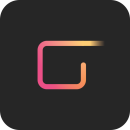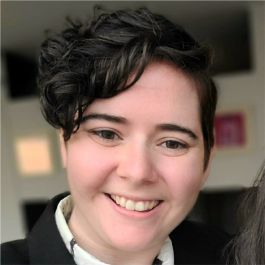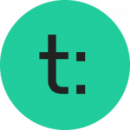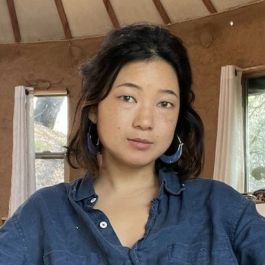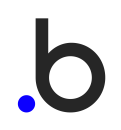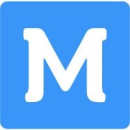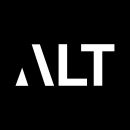Fostering effective cross-team collaboration is a vital part of delivering quality products and creating a healthy work environment. Yet many employees say their companies are lacking on this front.
A 2022 Alludo survey laid bare the shortcomings many businesses experience regarding collaborative work: 41 percent of respondents said that poor collaboration was responsible for three-to-five hours of lost productivity per week, while 78 percent said that leadership wasn’t doing enough to promote collaboration within their organizations.
41% said poor collaboration was responsible for 3-5 hours of lost productivity per week.
For designers and engineers — who have differences in approach and perspective but work toward a common goal — poor collaboration can result in heightened tensions and misalignments. These challenges are exacerbated in hybrid and remote environments.
Satpal Sharma, senior manager of user experience at Collibra, suggests companies connect engineers and designers early to create a space for open communication. “This will help avoid common pitfalls of design and engineering collaboration,” he said. “By working together as one team, we improve the experience for everyone and increase our chances of success.”
At Spring Health, synchronous meetings, informal Slack exchanges, office hours and a unified mentality are all essential factors in facilitating optimal collaboration. “Communication can be messy and limited when remote. These strategies help the teams have dedicated, focused time to collaborate when needed but also have lightweight tools to quickly sync,” explained teammates Ramya Baratam, lead product designer for the customer experience team, and Daniela Marmolejos, senior product designer.
Built In NYC spoke to team members at Spring Health, Collibra and four other companies to gain insights into how they create open communication channels between teams and what advice they have for other companies hoping to boost cross-team collaboration.
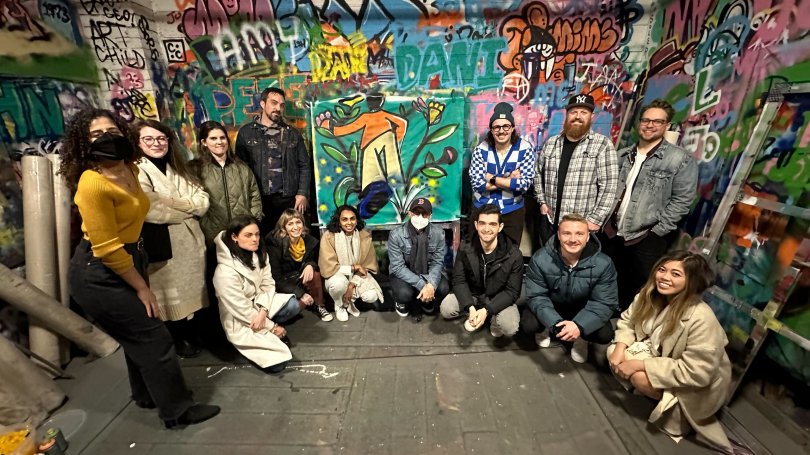
Spring Health is on a mission to increase access to mental health solutions. The healthtech company uses AI to connect health insurers and employees to optimal care solutions.
What kind of communication channels or collaborative strategies does Spring Health use to facilitate communication between your design and engineering teams?
Leverage synchronous meetings: We pre-plan meetings oriented around different goals, including planning, syncing and execution. This helps the team have dedicated time with others on the calendar.
Quick exchanges via Slack huddle: It’s lightweight, easy to hop on, delightful and works intuitively with individuals and teams. It facilitates the exchange of information quickly versus a long conversation via Slack messaging. Slack huddles eliminate many of the initial barriers in setting up a call.
Design office hours: We hold dedicated design systems office hours for both teams. We also have design office hours in our individual teams and base it on specific project needs. This provides a space for both teams to actively work together and iterate on designs or ideas.
Team retros: This is a safe space for both teams to have a voice, work through problems together and figure out how to meet each other in the middle.
Communication can be messy and limited when remote. These strategies help the teams have dedicated, focused time to collaborate when needed but also have lightweight tools to quickly sync, so they don’t have to wait for a meeting in order to solve a problem.
How does your company culture foster the kind of collaborative relationship required to make the two teams successful?
Make time to understand one another. In a remote world, we find ways to get to know each other better and build trust. We set up hangouts over Zoom where we catch up on our lives or play online games with each other such as guesser, skribble, drawphone and so on, to mix up the vibes.
We versus I: We believe that any team member at any level can contribute to the best solution. With project kick-off meetings, we bring on key stakeholders early on in the process, including design and engineering. I share preliminary designs with engineers to give them an opportunity to share their thoughts and participate in the project journey.
With project kick-off meetings, we bring on key stakeholders early on. I share preliminary designs with engineers to give them an opportunity to share their thoughts.”
Work in each other’s environments: Designers have test accounts and are constantly in the product environment understanding how the designs have been translated. Engineering and other teams are comfortable in Figma.
Celebrate and acknowledge contributions together: We celebrate together at the end of major releases and at the end of each quarter. This can include getting the whole team UberEats vouchers and hopping on a zoom to remind ourselves of the process we just went through and review our success metrics. We have a “donuts” channel for shout-outs on all wins.
What advice would you offer to other companies looking to build alignment between the two teams?
Understand each other. By understanding, we can empathize with each other’s values and goals and therefore are more likely to resolve conflict easily. This builds the foundation needed for a healthy working relationship.
You’ve heard it before, and you’ll hear it again: Over communicate, over communicate, over communicate. When you’re moving quickly, especially in the remote world, it’s easy for things to get lost. Ensure your team is informed when things change, and you have processes in place to ensure all stakeholders are brought around the table.
Foster individual investment: Loop in both teams from the beginning of a project, so both parties are invested in the problem from early on and have stakes in the game.
Foster collaboration from top to bottom: There are times when we think alignment happens only at the individual contributor level. It’s important to facilitate this from your leaders to ensure broader feedback can be implemented.
Team retros: Alignment doesn’t just happen when the project is being worked on. Setting up dedicated reflection time is important to understand what worked and what didn’t. Retros are a safe space to periodically reset and improve.
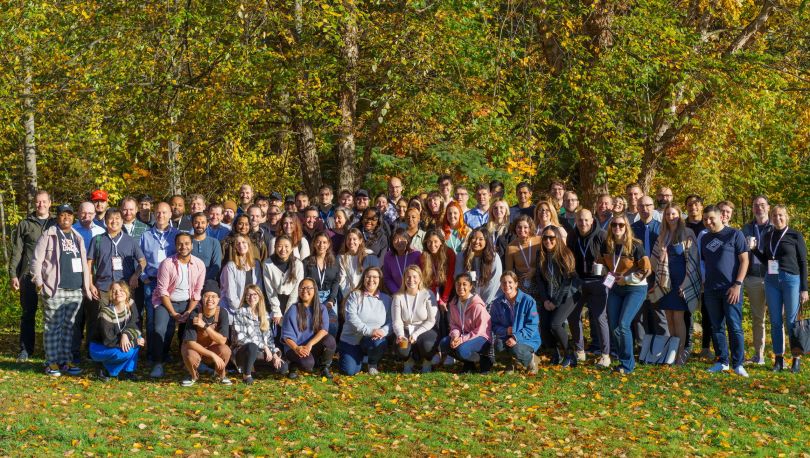
GlossGenius provides small business owners — particularly those in the beauty and wellness space — with a management platform that is as vibrant and intuitive as their products.
What kind of communication channels or collaborative strategies does GlossGenius use to facilitate communication between your design and engineering teams?
At GlossGenius, customer centricity exists at the center of how we build products. This means we talk to our users all the time. During our research and discovery phase, our designers ensure that our engineering partners are in the room. This helps them get involved early on to start building empathy, gain more understanding of the problem and contribute when we reach solution conception.
Designers are encouraged to start projects in low-fidelity and share often. This promotes a focus on problem-solving and reduces traditional intergroup challenges that tend to focus on visual design. By having design and engineering engaged together from the start, we prevent an environment where engineering comes in at the end just for technical sign-off.
How does GlossGenius’ culture foster the kind of collaborative relationship required to make the two teams successful?
We’re actively building a culture where the responsibility is shared and allows our engineering partners to contribute to the solution. We find a lot of success by having our software and QA engineers look and comment directly on the working documents — in our case, Figma. This allows for a majority of questions to be answered early and often and encourages asynchronous work so we can maintain good momentum.
As important as it is to get engineering involved at the beginning, we also consider the necessity of getting design involved at the end. It’s equally important to ensure that design is part of the sign-off process post-implementation. One concrete example of this is embedding design into the developer project management flow — in our case, Jira. Designers have a step in the flow that reminds the engineer to seek review on anything with UI or UX improvements prior to release.
As important as it is to get engineering involved at the beginning, we also consider the necessity of getting design involved at the end.”
What advice would you offer to other companies looking to build alignment between the two teams?
Encourage your designers to work in low fidelity when appropriate. Operating this way promotes important conversations about problem solving and user flow while removing distractions on personal preferences. Invite engineering partners to user interviews and allow them to participate in note-taking and observation to gain empathy and better contribute to the problem-solving process.

Collibra is a data intelligence company that provides customers with a platform to detect data-quality issues, automate workflows and protect and transform data landscapes.
What communication channels or collaborative strategies does Collibra use to facilitate communication between your design and engineering teams?
Our key to success revolves around our value of “Open, direct, kind.” We establish open channels of communication at the beginning of the project and invite feedback from stakeholders throughout. In doing so, our teams can ask questions and give input with empathy for one another and an understanding of how solving each challenge will impact our customers.
Every big initiative gets a dedicated “squad” of designers, writers and researchers. The squad joins members of product and engineering to form the project team. We start with the kickoff, where the whole team meets to outline the problem, and we establish a project Slack channel where team members ask quick questions and check in.
The squad holds refinement meetings with engineers as they progress on prototyping to adjust ideas and address constraints. This also helps engineers understand the rationale behind designs and gives them an opportunity to ask questions and help with solutions before designs are too far along.
The Slack channel remains active after engineers begin implementation, and engineers have access to all Figma files. They are encouraged to comment in Figma to keep the discussion in context.
How does Collibra’s culture foster the kind of collaborative relationship required to make the two teams successful?
Our mission is to change how organizations use data, and our belief in the power of data helps our teams work together effectively.
Our designers and researchers conduct extensive research and share it with product and engineering before they begin designing. This forms a solid foundation to work from. When questions arise, the team can go back to the data for an objective perspective on what will address our users’ challenges.
We conduct extensive research and share it with product and engineering before they begin designing. This forms a solid foundation to work from.”
I’ve found that Collibra engineers are exceptionally open to design decisions based on good data. Likewise, Collibra designers and researchers are motivated to deliver designs with sound, data-based rationale.
Another value that contributes to collaboration is “We are one Collibra,” which is our commitment to working, learning and having fun while moving together toward our goals.
An example of this in practice is our workshops. Workshops are interactive sessions where all team members contribute ideas, share constraints and solve problems. They often happen near the start of a project, but we will also schedule them throughout as needed. We usually host workshops virtually using Miro, but we’ve recently held a few in person.
What advice would you offer to other companies looking to build alignment between the two teams?
Connect engineers and designers early, and create space for open communication throughout the project.
In my professional experience, I’ve seen instances when the designer handed the engineers a spec doc and expected them to implement it pixel-by-pixel without much consideration for technical constraints. We prevent this by involving engineers in the kickoff, consulting them as we refine ideas, and keeping communication flowing through Figma and Slack as they implement the designs.
On the design side, it can be demoralizing to fully design a solution you’re excited about, only to find out it is technically impossible to implement. By hearing from engineers in the kickoff and checking in throughout the refinement stage, we can account for constraints in our designs and work with engineers to figure out technically sound solutions to our users’ challenges.
By working together as one team, we improve the experience for everyone and increase our chances of success.
Edtech company Teachable hosts over 100,000 instructors and creators who use the platform to monetize and share their knowledge with learners, track and analyze their business performance, and more.
What kind of communication channels or collaborative strategies does Teachable use to facilitate communication between your design and engineering teams?
Collaboration between engineering and design is most successful when the two functions are working together toward a common goal. To accomplish this, Teachable utilizes cross-functional product delivery teams, where engineers sit on the same core team as a designer and a product manager and attend scrum meetings together, including sprint planning and daily stand-ups.
This close collaboration allows for open and consistent communication between the two functions. For example, engineers reach out to their team’s designer directly with any questions on the designs they are implementing, and designers share feedback on in-progress work right to engineers through a visual QA process. Even in the planning phase of projects, designers talk directly to engineers when they are ideating feature improvements and finalizing designs. This way, engineers provide valuable insight into the level of effort certain functionality requires or call out edge cases as early as possible to ensure the team can most effectively deliver positive outcomes. When the collective team works collaboratively towards a common goal, a true partnership between the functions flourishes.
How does Teachable’s culture foster the kind of collaborative relationship required to make the two teams successful?
Teachable’s culture is built on core values. Two of them stand out as driving a successful collaborative relationship between design and engineering: “Build a Foundation of Trust'' and “Learn Together.”
Our cross-functional teams enable designers and engineers to work closely and build relationships with each other. Not only are they working together on delivering projects, but teams also engage in social events ranging from “lunch and learns” to drawing competitions. These activities bring the individuals closer and build the foundation of trust required to work effectively together with commitment and transparency.
As is fitting to our mission, Teachable strongly values continuous learning and offers many internal programs to that end. One is called Design:able, a three-month program that has front-end engineers learn directly from a designer about the value of product design, with a goal of fostering cross-functional empathy and efficiency. Students even design a product feature themselves, actively seeing the work from a design perspective and proving that sharing knowledge and learning together is a great way to bridge the gap between designers and engineers.
What advice would you offer to other companies looking to build alignment between the two teams?
My advice would be to encourage the teams to play to each other’s strengths. Engineers and designers often think quite differently. While that can lead to disagreements or tension, in a highly collaborative team with shared goals, those differences can serve to push the team forward.
Engineers and designers often think quite differently. In a highly collaborative team with shared goals, those differences can serve to push the team forward.”
A designer’s role as a fierce advocate for the user ensures that the team is working on the most important features, but it must be matched with an engineer’s discerning eye for feasibility in order to collectively achieve the best outcomes.
A designer’s creativity can push engineers to build captivating new design patterns that challenge them, and an engineer’s analytical reasoning can uncover solutions that never occurred to a designer. Ultimately, both teams thrive in solving problems, and when they play to each other’s strengths and rally around their shared goals, there’s no end to the innovation they foster together.
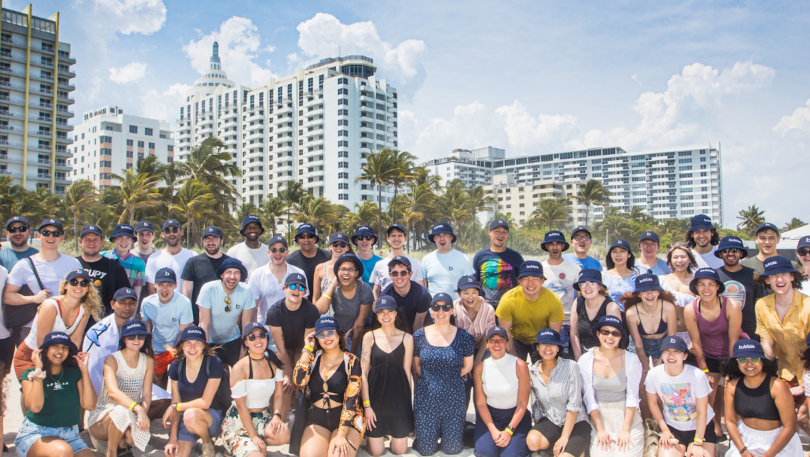
Bubble is a visual programming platform used by over 1 million people to create and host full-featured web applications without needing to code.
What kind of communication channels or collaborative strategies does Bubble use to facilitate communication between your design and engineering teams?
As a designer, I need to sync regularly with my engineers to review builds and discuss adjustments. I work remotely, so the usual quick requests given in the hallway or at someone’s desk need to be handled virtually. Here are a few of my favorite tips for working seamlessly and integrating with your engineering team as a remote product designer.
My engineers find it extremely helpful when I send video walkthroughs of prototypes. I use the shortcut Command + Shift + 5 to pull up the default mac screenshot tool, hit enter to record, and voiceover the user story, details in the design, rationale behind design decisions, and pending or in-progress areas as I click through the prototype.
This is especially helpful for more complex interactions or flows where engineers might not know how to navigate the prototype or catch all the changes that have happened. This saves me time from having to type out long paragraphs of rationale and also serves as an artifact that I can easily share.
How does Bubble’s culture foster the kind of collaborative relationship required to make the two teams successful?
I’m lucky to work at a company where user-centricity is a formalized value. Stating user-centricity as a company value gives employees something to point to as a reason and a reminder when making decisions.
However, if that is not the case for you, I recommend advocating for user perspectives at team meetings. You can do this through the following:
First, you can speak in terms of user journeys: “So as a user, I would be googling for a solution, land on our homepage, and start browsing through our offerings…”
Second: Explain the “why” behind design decisions using principles such as UX Laws.
Third, you can surface user feedback directly to stakeholders: At Bubble we are lucky to have a passionate user base and active forum for viewing feedback. If possible, find and share user feedback to keep the user voice close to the team that is building features.
By working through a problem space together, you often build respect for each other’s ways of thinking and create a team mentality towards a single goal.”
What advice would you offer to other companies looking to build alignment between the two teams?
Oftentimes, engineers or other stakeholders are not familiar with design thinking. I find that facilitating design workshops — such as Jobs to Be Done, FigJam brainstorming sessions, Crazy 8’s and cardsorting — help build stakeholder alignment and conviction. Not only do we get everyone into a room with a collaborative working session mindset, but we also introduce the many considerations that go into design explorations. Furthermore, by working through a problem space together, you often build respect for each other’s ways of thinking and create a team mentality towards a single goal.

MaestroQA’s platform offers customer service managers solutions for understanding and tracking their support quality, automating repetitive tasks and coaching team members.
What kind of communication channels or collaborative strategies does MaestroQA use to facilitate communication between your design and engineering teams?
The most successful “feature teams” excel at constant communication between the engineering lead, product manager, and UX designer. Each team has a dedicated Slack channel where those “big three” share requirements and prototypes, discuss trade-off decisions, answer questions and so on.
In addition to that forum, the entire team participates in routine ceremonies, including daily stand-ups, weekly sprint planning and monthly prioritization syncs. Sharing context throughout the process — from prioritization to discovery to design to build — ensures that things don’t slip through the cracks.
At Maestro, we share work and encourage discussion and debate at each step in our process.”
How does MaestroQA’s culture foster the kind of collaborative relationship required to make the two teams successful?
At Maestro, we share work and encourage discussion and debate at each step in our process. As an example, our designers share their prototypes before we move a project into development, and we have a healthy debate around if it’s the right solution to the user problem and what the correct MVP strategy is. Similarly, we invite the design team to participate in a “test swarm” at the end of the build process to ensure that the appropriate fit-and-finish is applied before enabling a new feature. These activities help the teams hold each other accountable and keep our standards high, both in terms of the team’s talent and the quality of the software we release.
What advice would you offer to other companies looking to build alignment between the two teams?
Create ways for our entire product delivery organization to connect. At Maestro, we host a quarterly team offsite and a bi-weekly game of Skribbl. These activities help us get to know each other on a personal level and foster a little friendly competition across the entire team.
Also, make sure that you recruit and hire candidates that fit within the speed and culture of your team. These can be hard things to test for in the interview process, so be thoughtful in preparing questions and exercises that demonstrate how well a candidate can collaborate and plug into the type of process you are trying to achieve. We’ve had success conducting a couple of role-playing exercises with our designers to see how they handle situations where they are challenged.
Alt provides a platform for buying and selling investment-grade trading cards.
What kind of communication channels or collaborative strategies does Alt use to facilitate communication between your design and engineering teams? In your opinion, what makes them successful?
At the core, beyond the craft of design, the role that design plays is that of facilitation. Through multiple channels and at different stages of the process, we encourage everyone to take part in product design. Some of the best and most impactful work is when engineers are invested and involved in the design process and vice versa.
Some of the best and most impactful work is when engineers are invested and involved in the design process and vice versa.”
With that mindset, we work collaboratively from the start. We have brainstorming sessions so that engineers are contributing to ideas from the start. A lot of cool ideas actually surface from those sessions, helping us identify what we could be working on and how best to solve problems. We also have scheduled biweekly design reviews where we showcase current work in progress so we can get input and feedback from different perspectives.
We also do project-level reviews and iterations when engineering is about to start working on features. Once features are implemented, designers also review the user experience. The channel of communication is always open, clear and, as a result, a lot of times engineers bring up better solutions than what designers might have started with. To a certain extent, being a remote company and using Slack for communication makes this happen in a much faster and more transparent way.
How does Alt’s company culture foster the kind of collaborative relationship required to make the two teams successful?
I think this goes back to our core value of “customer empathy.” We want to do what is needed to solve our customers’ pain points and delight them with our product. That is how we want to deliver value to our customers. When both the teams start with a shared understanding, it makes conversations and decision making much more effective. We bring insights and data from user research, analytics or the support team and are constantly measuring the impact of our work. So, when we share designs in reviews or make decisions, we use data to make informed decisions as a team.
From a collaborative relationship perspective, we have invested in building a robust design system at a very early stage. We constantly review this with the engineering team and are collaborative in this process. This has helped us focus and has helped each of the teams move fast and be efficient. Our design reviews are often very engaging and foster a healthy discussion on how best to solve user needs. In these sessions, we are always looking for ways to get more folks to engage and co-create.
What advice would you offer to other companies looking to build alignment between the two teams?
A lot of times, design is misunderstood as just UI. The value of design and how great design comes to be is often not well understood. Remedying this is an ongoing practice of being inclusive and a responsibility to ensure that engineers experience the value of design and what great collaboration between design and engineering looks like. At the same time, it is also important to really lean in and understand how engineers solve problems, deal with constraints and embrace them. This makes the product and experience much better. This is also an opportunity and a skill that designers need to build.





